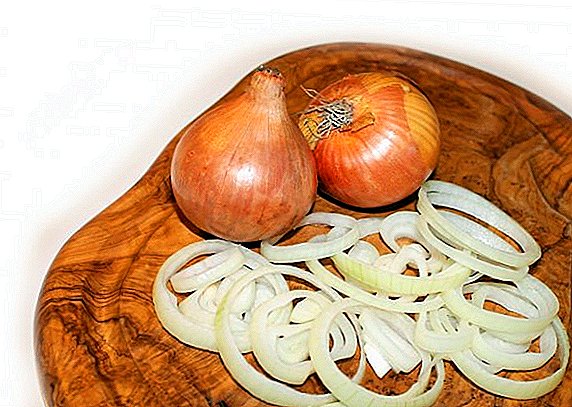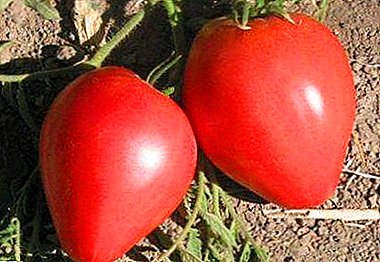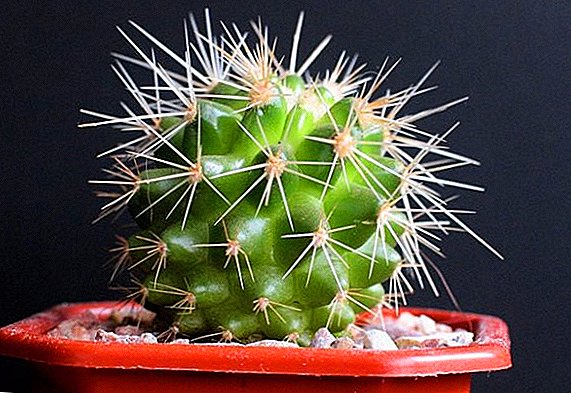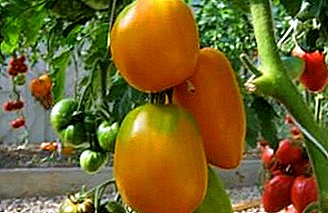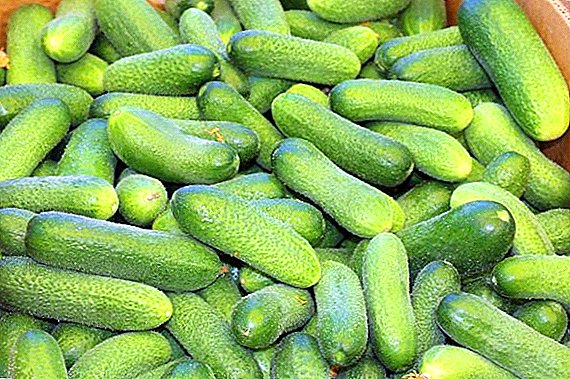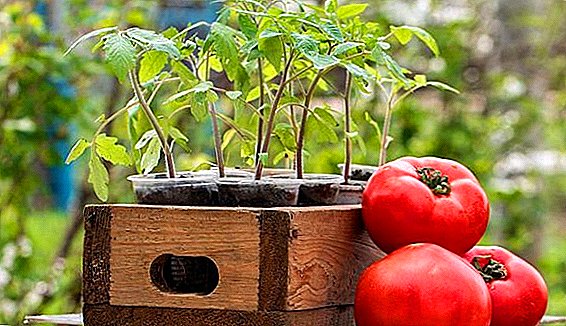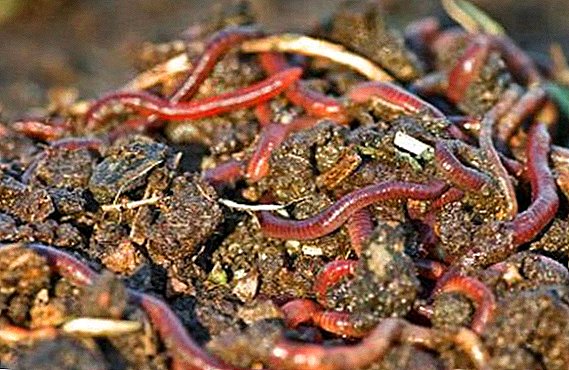 A balanced and well-composed ration of birds is the key to their good health, normal weight gain, and high productivity. A very important part of the diet are animal products - sources of protein. Therefore, many owners of livestock chickens think about the possibility of feeding the birds by the larvae and worms. But then a lot of questions arise: will it harm the cups, what species of larvae to feed, can we grow worms and how to do it at home? If all the above questions are relevant for you - you will find the answers to them later in the article.
A balanced and well-composed ration of birds is the key to their good health, normal weight gain, and high productivity. A very important part of the diet are animal products - sources of protein. Therefore, many owners of livestock chickens think about the possibility of feeding the birds by the larvae and worms. But then a lot of questions arise: will it harm the cups, what species of larvae to feed, can we grow worms and how to do it at home? If all the above questions are relevant for you - you will find the answers to them later in the article.
Feeding chickens with worms: is it worth it?
Many owners of birds know that worms are an excellent source of natural animal protein, as well as, to a lesser extent, fat, beneficial enzymes, vitamins.
Did you know? Inhabitants of the West only the thought of eating insects can cause discomfort in the stomach, but in many countries insect dishes are a common part of the national cuisine. Almost 30% of the population of the planet constantly eat such dishes. For example, in Thailand they make garnish from bamboo worms, fry them, dry, and serve with sauce. Grasshoppers make a chocolate treat, and the larvae - spices. Also, insects are eaten in Mexico, Brazil, China, Australia, African countries. Of all the diversity of this group of animals, man uses in food about 1900 species.
Worms are recommended to feed adult chickens to improve the taste and other characteristics of eggs, and it is useful for young animals to give worms for quick mass gain. They can also be given to chickens from day old, but the worms must be dried beforehand. 
Types of worms for feed
Chickens are not averse to eat many kinds of insects, arthropods, worms, as well as larvae. The most common types of worms for feeding to the heel are flour, earthy, dung and maggots.
It will be useful for you to read about whether it is possible to give bread and foam plastic to chickens.
Flour worm
In fact, what we call a flour worm is the larva of a large meal stubble. It grows up to 25 mm, the body is round, light brown or yellow. 
Caloric value and the ratio of BFA larvae of the flour beetle:
- 650 kcal per 100 g;
- proteins - 53%;
- fat - 33%;
- carbohydrates - 6%.
The larvae are also rich in minerals: phosphorus, calcium, sodium, potassium, zinc and selenium. However, based on the characteristics, it can be concluded that the nutritional value is relatively low and the amount of fat and protein is unbalanced.
Important! Despite the fact that chickens are very fond of this product, it is impossible to use the larvae as the main source of animal protein, as due to the high percentage of fat in birds, obesity can develop. They can be given only occasionally as a delicacy.
These worms are very easy to breed, but many can be embarrassed and even averted by the look of a squirming tangle of brown larvae. 
Maggot
Maggots are called fly fly larvae. Grow up to 4-12 mm, are used in fishing, as well as for feeding chickens, exotic pets, aquarium fish. This product is easily digested, accelerates weight gain in young birds, increases the productivity of adults, well satisfies hunger.
Learn how to give chickens bran, meat and bone meal and yeast.
Thanks to a balanced amount of protein and fat, maggots do not cause the risk of obesity. In the diet of young klush you can enter them from 1-1.5 months. It is especially important to give such dressing in the winter months when there is a shortage of nutrients.
If in the summer the livestock freely walks around the yard, the need for larvae decreases, and if chickens do not have access to the paddock, the delicacy can be introduced into the diet all year round. Remember that maggots are only an additive to the basic grain diet and do not constitute the main part of the diet.  Calculating the number for birds of different ages:
Calculating the number for birds of different ages:
- Young animals: begin to enter into the diet of 5 g per individual, gradually bring a single portion to adult size.
- Adult chickens: give at the rate of 30-40 g per individual. When feeding twice a day, it is advisable to give between meals as a snack.
Did you know? Maggots bring significant benefits in medicine. Even a separate direction for cleaning wounds has developed, which is called "larval therapy." Since the larvae feed on dead tissues, they are used as a cheap, simple and highly effective way to clean wounds from suppuration and necrotic tissues. At the same time, living tissues are of no interest to worms, and the antibiotic secreted by them contributes to disinfection. The method was discovered during the First World War and is still used in many clinics in Europe and the USA.
Growing maggots at home is very simple. They eat almost everything, they can even be given chicken droppings as food. But you should be prepared for a very specific smell, which inevitably appears when breeding larvae at home.
Video: how to dissolve moldy worm at home
Earth (rain) worm
Also a very popular form of worms for feeding poultry. There are many minerals, beneficial amino acids, vitamins.
Read more about what types of feed for chickens exist, as well as how to prepare feed for chickens and for adult birds with your own hands.
The ratio of BZHU is the following:
- proteins - 53.5%;
- fat - 6.07%;
- carbohydrates - 17.42%.
In domestic breeding of the earthworm, species of the red "California" earthworm, or "prospector", are usually chosen. For the year a couple of individuals can reproduce about 3000 units of offspring.  It is quite simple and advantageous to breed them, but one should take into account the thermophilicity of worms and maintain an optimal temperature for life even in winter (with year-round cultivation).
It is quite simple and advantageous to breed them, but one should take into account the thermophilicity of worms and maintain an optimal temperature for life even in winter (with year-round cultivation).
Muckworm
The last meat supplement for chickens, which we consider, will be a dung worm. Individuals grow to 6-10 cm, very mobile, the body is painted in red-purple color. This species is very similar to the earthworm. In addition to adding to the diet of birds, dung worms are used as bait when fishing, as well as for the manufacture of vermicompost.
We advise you to read about how to make mash, as well as how to germinate wheat for chickens.
This product has a balanced ratio of proteins, fats and carbohydrates (the amount of nutrients is similar to that of the earthworm). Chickens very quickly and with pleasure absorb the dung worm proposed by him. 
How to breed worms
The process of breeding worms at home is simple. Let us analyze it by the example of the prospector's earthworm. This species multiplies rapidly, lives for a long time, easily adapts to any food, and in the process of its breeding there is a minimum of difficulties.
For the chervyatnik equipment, prepare the following materials and tools: plastic or wooden boxes without holes, a drill.
- Choose a place to keep the worms. It can be a garage, a shed or any building, the temperature of which is in the range of 15-25 ° C.
- In the drawers, drill holes in 2-3 rows along the top edge for ventilation.
- Pour compost, sawdust and some straw into each box, fill it with a colony of pets, fold the containers over each other.
- Cover the top box with a lid to keep the worms dark.
Video: how to breed worms It is very important to choose the right compost. Korovyak or pig manure must previously "otlezhatsya" at least six months. But goat or rabbit dung can be used fresh. It is also not recommended to pour manure that has been stored for more than 2 years: the amount of useful substances in it is minimal.
Important! In no case can you pour fresh cow or pig manure, otherwise you can destroy the entire colony.
You can buy worms in specialized stores or via the Internet. The required number of worms is calculated as follows: per 1 sq. M. m. need about 20-30 pieces. That is, 5, maximum 10 individuals will be enough for a standard ski box. The more boxes, the more individuals will be able to withdraw.  Feeding is carried out every 10-15 days, but the frequency depends on the number of individuals and the temperature: the warmer, the more active the worms will be. For feeding, you can choose the skins of fruits and vegetables, but animal products should be avoided.
Feeding is carried out every 10-15 days, but the frequency depends on the number of individuals and the temperature: the warmer, the more active the worms will be. For feeding, you can choose the skins of fruits and vegetables, but animal products should be avoided.
We recommend reading about how and how much to feed the chickens, how much feed the chicken hen needs per day, as well as what to feed the chickens in winter to increase egg production.
Before feeding, food should be chopped. Periodically you need to moisten the compost (it is better to use a watering can with small holes) and gently loosen, while trying not to mix the layers of compost.
To collect worms for feeding birds, you can do this: during the next feeding, wait until the most hungry and agile individuals crawl to the surface. They will be food for your chickens. So, feeding the chickens with worms is not only possible but necessary.  Worms should not be used as the main food, but as an additive to grain and other vegetable feed. This product helps to increase the productivity and quality of meat and egg products. If there is a place to breed worms at home is not difficult, but the result of the introduction of the "meat delicacy" into the diet will obviously make you happy.
Worms should not be used as the main food, but as an additive to grain and other vegetable feed. This product helps to increase the productivity and quality of meat and egg products. If there is a place to breed worms at home is not difficult, but the result of the introduction of the "meat delicacy" into the diet will obviously make you happy.
Reviews from the network




